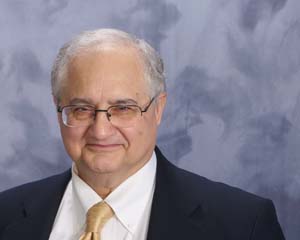Introduction to Distance Education: Theorists and Theories — Reflections on Theories
By Farhad Saba, Ph. D.
Founder, Distance-Educator.com
Industrialization has been a feature of distance education for many years. Otto Peters, a pioneering theorist, explained when technology is used to reach students in mass, education assumes industrial characteristics, such as, standardization of services and mass production of educational products (Keegan 1994). To the extent that correspondence education relied on mass production of instructional materials (e.g. books) it was an industrial enterprise. Another manifestation of industrialization in distance education is division of labor. The course team as originally conceptualized Charles Wedemeyer and implemented by the British Open University is an example of division of labor in distance education. The modern university is also endowed with a bureaucracy, by definition is an industrial operation – although the teaching practices both in the classroom and at a distance, largely, remain pre- industrial (pre-modern) and craft oriented.
Industrialization of education is particularly desirable when the need of many students for access is at stake. Daniel (1996) emphasizing the failure of “campus” education to meet such a need, particularly in developing countries, contrasted the operation of “mega-universities,” or those catering to the needs of at least 100,000 students, with that of “campus” universities. He said:
“The mega-universities differ from campus universities in their production processes. The operations of the mega-universities owe much to industrial methods. Whereas academic processes on campus are akin to a cottage industry.” (P. 45).
It is important to note here that Daniel’s notion of a “cottage industry” is different than that of Toffler, who envisaged a “cottage industry” as a “third wave phenomenon.” Daniel’s reference to a “cottage industry” here is a pre-industrial operation with faculty who work alone and perform their tasks without the benefit of a supporting staff affording them the advantages of industrial division of labor.
Introduction of the Internet with its potential for a post-industrial form of education has led to a critique of industrialization. Daniel (1996) referring to the shortcomings of the pre- industrial, and industrial operations, said “It is likely that neither approach will be particularly well suited to the third generation of distance education technologies: the knowledge media.”
Garrison, and Anderson (1999) made a distinction between Daniel’s (1998) conceptualization of the role of the mega-university, in serving a mass of students with that of the research university. Drawing from Schramm’s (1977) distinction between “big media,” and “little” media, Garrison, and Anderson argued, while mega-universities might rely on big media to engage in responding to a mass audience, research universities might rely on little media to offer a seemingly post-industrial form of education or “little distance education” (LDE). They posited LDE to have the following characteristics:
- Maximizes interaction
- Focuses on meaningful learning outcomes
- Maximizes active learning
- Provides flexible design
- Supports a systems view in its administrative affairs
- Sustains a distributed architecture
- Upholds research in practice, and
- Offers cost effective education
Daniel (1998) was cognizant of this dynamic vision of teaching and learning when he said: “The coming together of telecommunications, television and computing is producing a media environment for distance education that is more than the sum of its component elements.” Referring to this new media environment as “knowledge media” He, said: “It denotes the convergence of the learning and cognitive sciences with computing and telecommunications technology” to create a new environment in which “the conventional, rather static, notion of ‘content’ will become less important than the dynamic means of accessing, sharing and creating knowledge now available. By providing a medium for conversation, a delivery mechanism and a means of circulating digital objects, the knowledge media honour both the community and conventional paradigms that are central to the idea of a university.”
Providing affordable education to all eligible learners while catering to their individual needs for learning and personal requirement for interaction with the instructor is the core issue in developing and implementing a post-industrial distance education system. The tension between the necessity of a second wave industrial system of mass education and a third wave system where individual needs are addressed is a classic Tofflerian conflict.
REFERENCES
Daniel, S. J. (1998). Mega-universities and knowledge media: Technology strategies for higher education. London, UK: Kogan Page.
Garrison, R. D., & Anderson, T. D. (1999). Avoiding the industrialization of research universities: Big and little distance education. The American Journal of Distance Education. (13), 2, 48-63.
Keegan, D. (Ed.). (1994). Otto Peters on distance education: The industrialization of teaching and learning. London, UK: Routledge.








